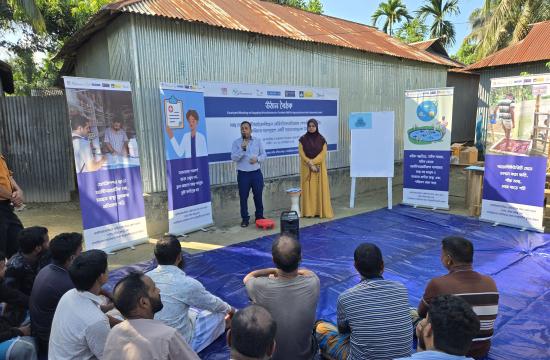Harnessing Aquatic Foods for Healthy People, Healthy Planet, and Shared Prosperity
Big Splashes Over Five Years, 2020–2025
Global Impact from WorldFish Research and Innovations
people, including women and children, nourished adequately with aquatic foods integrated in their diets
women and people from other marginalized groups empowered with greater access to resources, markets, and decision-making in the fisheries and aquaculture sector
households increased their incomes through increased sustainable production of aquatic foods
hectares restored through sustainable/ improved management of natural resources
MT of fish, seaweed, and other aquatic foods produced with reduced greenhouse gas emissions and greater resource efficiency
On behalf of WorldFish I extend our profound sympathy and sincere condolences to the Royal Family’.
The Latest
Stay up-to-date with the latest news and developments in research and innovations across aquatic food systems.
WorldFish Promotes Antimicrobial Stewardship in Aquaculture: A People-centric Community-Based Approach
Blog
The misuse and overuse of antimicrobials in aquaculture drives the development and spread of AMR pathogens, making antimicrobial stewardship (AMS) vital for ensuring…
Livelihoods, Nutrition and Public Health • 08 Dec 2025
Read MoreSpotlight on Women’s Hidden Labour: Gleaning in Mozambique
Blog
At dawn in coastal Mozambique, groups of women make their way to the shore. Some walk alone, others accompanied by children or neighbors, but all are there to glean. For…
Gender and Youth, Social and Economic Inclusion • 28 Nov 2025
Read MoreFeed Is Holding Kenya’s Aquaculture Boom Back
Blog
Aquaculture in Kenya is growing fast but one thing is holding the sector back. Feed. Across the country, fish farming is creating income, food, and opportunity for rural…
• 26 Nov 2025
Read MoreBig Facts on Aquatic Foods
600
million number of people around the world who depend on small-scale fisheries and aquaculture for their livelihoods.
204
million tons - the volume of aquatic food production by 2030.
60
million - number of people engaged in the primary sector of fisheries and aquaculture in 2018.
24
trillion - the value of the ocean economy, including fisheries, shipping lanes and tourism.




